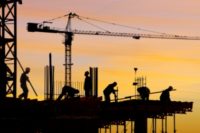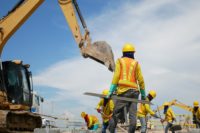Construction safety and worker protection are ongoing priorities for site managers and stakeholders. Preventing on-site mishaps and enhancing efficiency requires a shift from reactive to proactive thinking through video monitoring and analytics.
Rather than responding after safety incidents, video analytics can enable construction site supervisors and managers to identify risks early on so potential hazards don't become actual.
What is video analytics?
Video analytics is the process of extracting useful information from video data. This process has evolved in recent years thanks to artificial intelligence and machine learning technologies, allowing algorithms to analyze live feeds and generate alerts automatically.
Analyzing video data in real time consists of three main functions — detection, classification and tracking. Detection identifies objects of interest, such as people and vehicles, within a video frame and classifies them based on predefined criteria. Tracking functionality automatically follows the identified objects. These functions facilitate analytics, providing valuable, actionable insights into everyday processes for improved decision-making.
Video analytics is increasingly utilized across various industries and is expected to reach a market valuation of $37.7 billion by 2030.
How can video analytics improve construction safety?
Construction ranks among the most dangerous industries based on workplace injuries and fatalities. Traditionally, detecting safety failures occurs after the fact. However, this reactive approach is costly in many ways, including worker compensation and lost productivity.
Video analytics can engineer a change to a more proactive and preventive approach by enabling continuous real-time monitoring of high risk factors in construction sites. Detecting and tracking on-site movements provide instant alerts, allowing managers to pinpoint imminent dangers and take immediate action to prevent injuries before they happen.
Key areas where video analytics can improve construction safety include:
Open edge detection
Falls, slips and trips are the leading causes of casualties in the workplace. According to the Bureau of Labor Statistics, the construction industry accounted for over 46% of these accidents in 2021. Video monitoring can help prevent these safety issues by alerting the supervisor when a worker is standing or working dangerously close to an open edge.
Danger under lifted loads
Falling objects is one of OSHA’s “Fatal Four” hazards in the construction industry. Real-time analytics can detect when workers are standing directly below lifted loads and alert them to move out of the way.
PPE detection
Wearing personal protective equipment is critical to ensuring safety on construction sites. Supervisors can configure video monitoring algorithms to detect workers without PPE and send a warning.
Vehicle and moving equipment proximity
Construction vehicles and moving equipment can pose significant risks to workers. On-site supervisors can receive alerts within seconds when workers are at risk of danger from unsafe proximity to these machinery.
Restricted area
Many construction sites have areas with controlled access to protect individuals from exposure to hazardous situations. Video analytics can help managers keep track of workers in and around these restricted areas and coordinate an immediate response via radios.
History and trends
Beyond preventing construction safety incidents, video analytics provides data and trends to help managers understand if their action plans are working. It also enables them to identify what safety best practices need revising and reinforcing among workers. This can improve the on-site safety culture from the ground up and reduce workplace accidents.
Video analytics for enhanced productivity
The construction industry is one of the largest in the world. There’s always room for improvement, especially in terms of labor productivity. Improving productivity levels can increase the sector’s added value by over $1.5 trillion yearly.
Leveraging video analytics can be instrumental in this regard by providing actionable insights into worker activity and resource utilization on construction sites.
Leveraging video analytics can provide actionable insights into worker activity and resource utilization on construction sites. For instance, managers can make informed decisions about optimizing work schedules and mapping out access routes if there are bottlenecks in materials delivery. This reduces delays and enhances overall productivity.
Video analytics challenges
A few key challenges exist when introducing video monitoring and analytics in construction sites. These include:
Data drift
Video analytics models are trained on input data. However, changes in on-site processes and environments can render these datasets obsolete, creating a dissonance between what’s being analyzed and what was used in the model training. This leads to inaccurate analytics and reporting.
Construction managers can combat data drift by retraining analytic models periodically using updated information. It’s also essential to continuously monitor the system to detect when it requires fresh data.
Complexity of analytics tools
The scale of data involved in video analytics is substantial, often requiring advanced software and specialized hardware to process. That means construction managers must undergo technical training on properly using the tools to get the right results.
Data storage
Daily video footage from hundreds or thousands of cameras on a construction site can be massive. Purchasing exabytes of storage facilities can help address this issue. Other possible solutions include compressing raw footage and leveraging cloud storage systems.
Maximize construction safety and productivity with video analytics
Video analytics in construction sites can be a powerful tool for improving worker safety and productivity. Managers and supervisors can use real-time monitoring and analysis to cultivate a proactive approach to workplace safety and a more efficient work environment.



